Sew leg seams and topstiched hem #BE05
I will show you step by step how to sew leg seams and topstitched hems on trousers in the following video and illustrated text instructions. I finish both trouser legs separately before closing the crotch and seat seams. Pockets on the back and front of the trousers should already be sewn in at this stage. If you have configured your trousers with inseam pockets, the side seams are already closed. I will show you two different hem variations, one with a single folded hem and one with a double fold.
1. This is required:
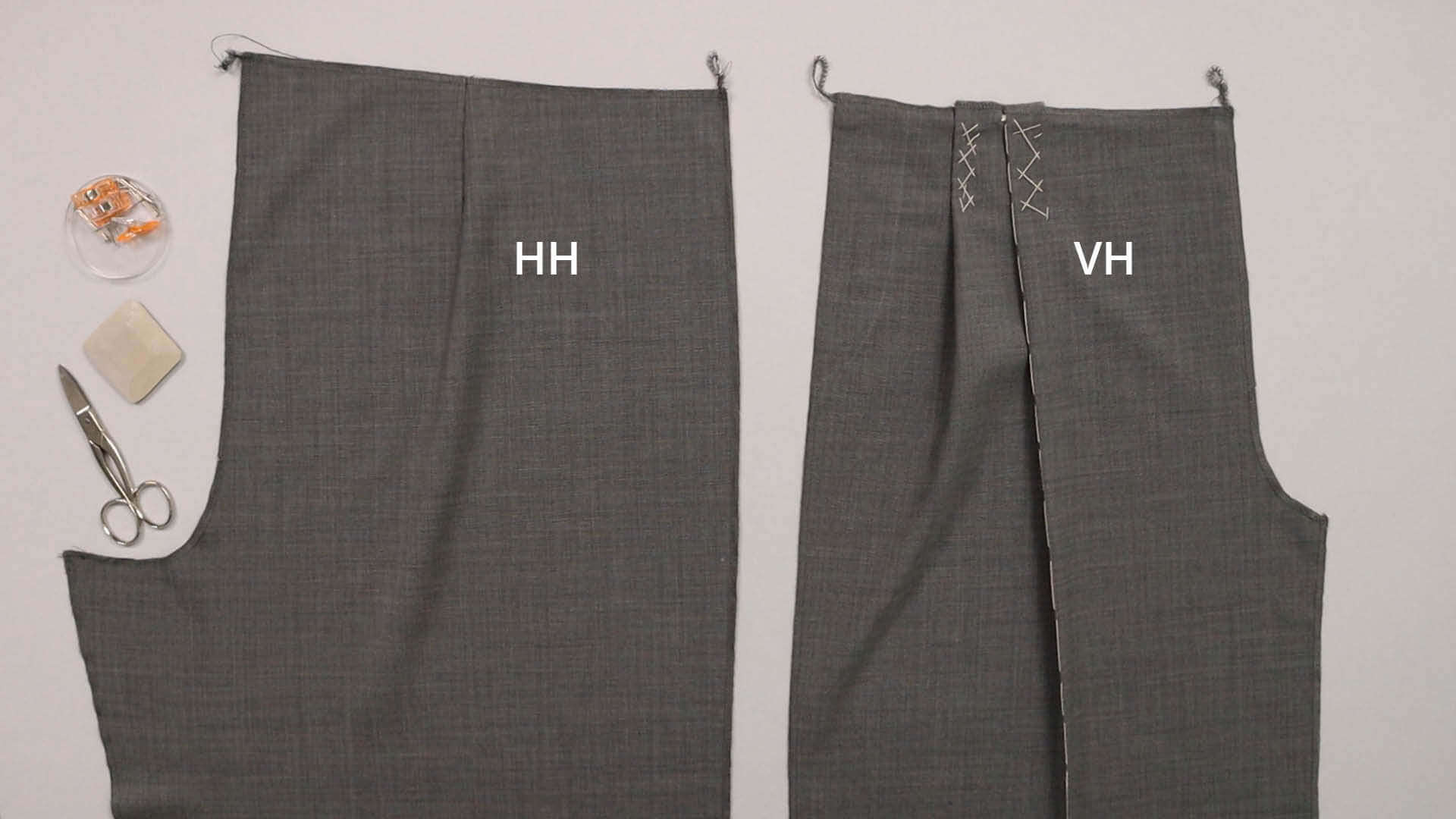
Pattern pieces made from main fabric:
- the prepared back trousers (HH) – 1 pair
- the prepared front trousers (VH)- 1 pair
Tools and aids:
- pins or clips
- scissors
- chalk or fabric marker
- long ruler
- matching sewing thread and hand sewing needle
2. Iron the back trousers into shape
If you have already ironed your back trousers into shape when trying them on, you can go straight on to the next step.
You can find the ironing instructions here (step 3).
3. Close the outer leg seam
If you are sewing your trousers with inseam pockets and the outer leg seams are already closed, continue with step 4.
If your trousers do not have knee lining, you must neaten the inside and outside edges of the legs, the top edge and the crotch seam before closing the leg seams. You can cut back the front edge of the front trouser part to which the fly facing will be attached, according to the marking in the pattern.
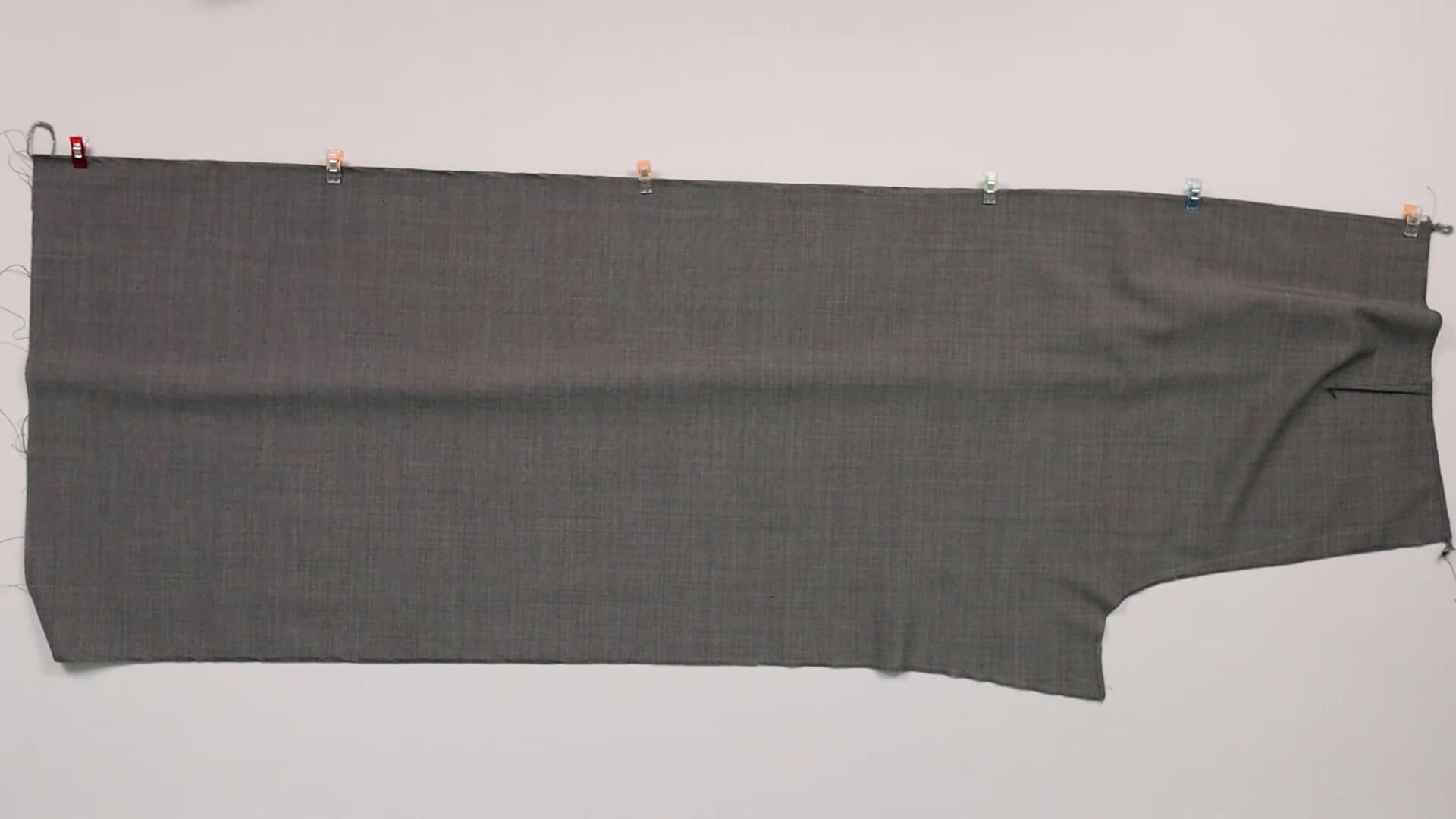
I place the front and back trousers right sides facing and pin the side seams in place.
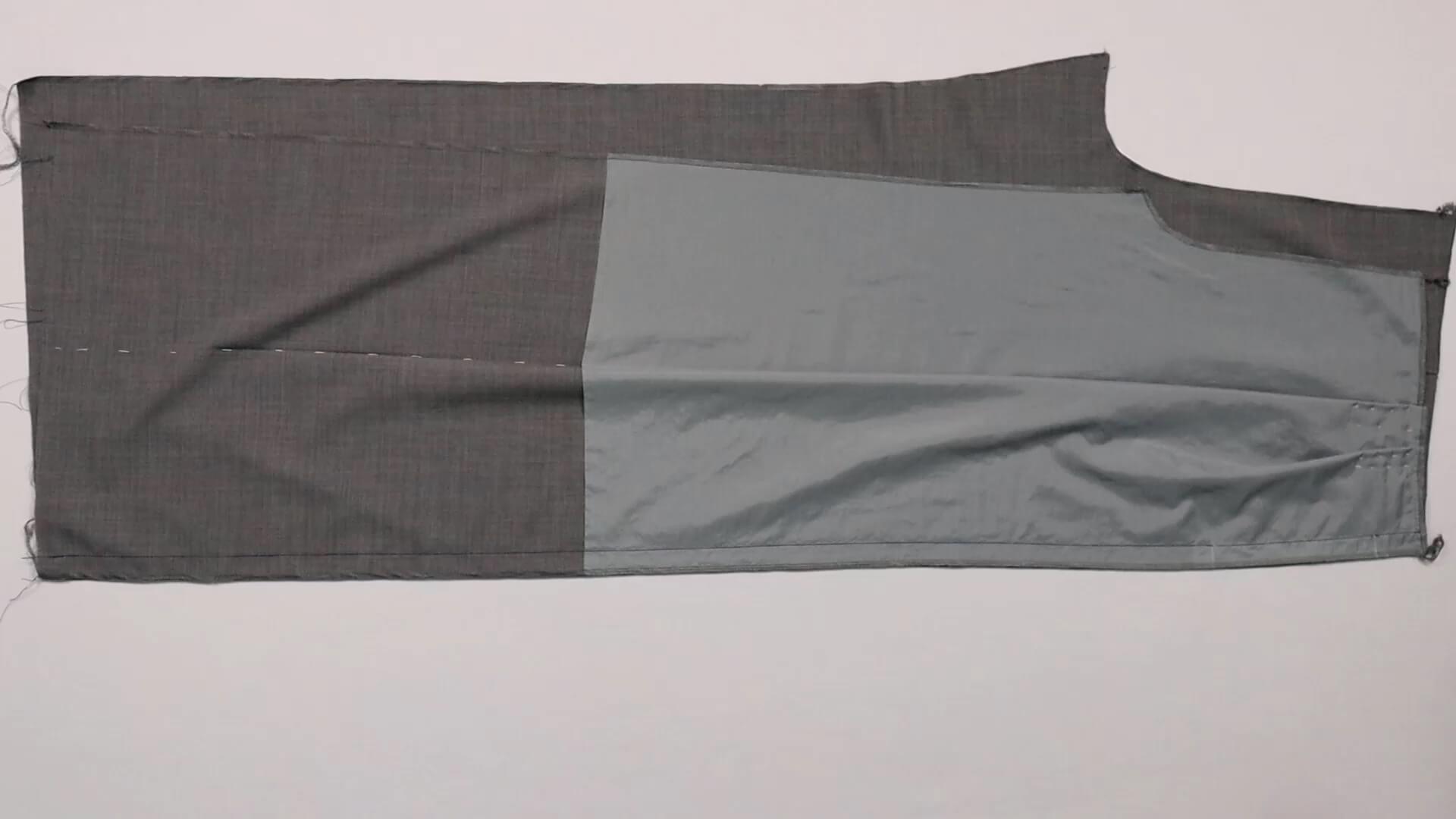
Then I sew the side seam, using the seam allowance indicated on the pattern.
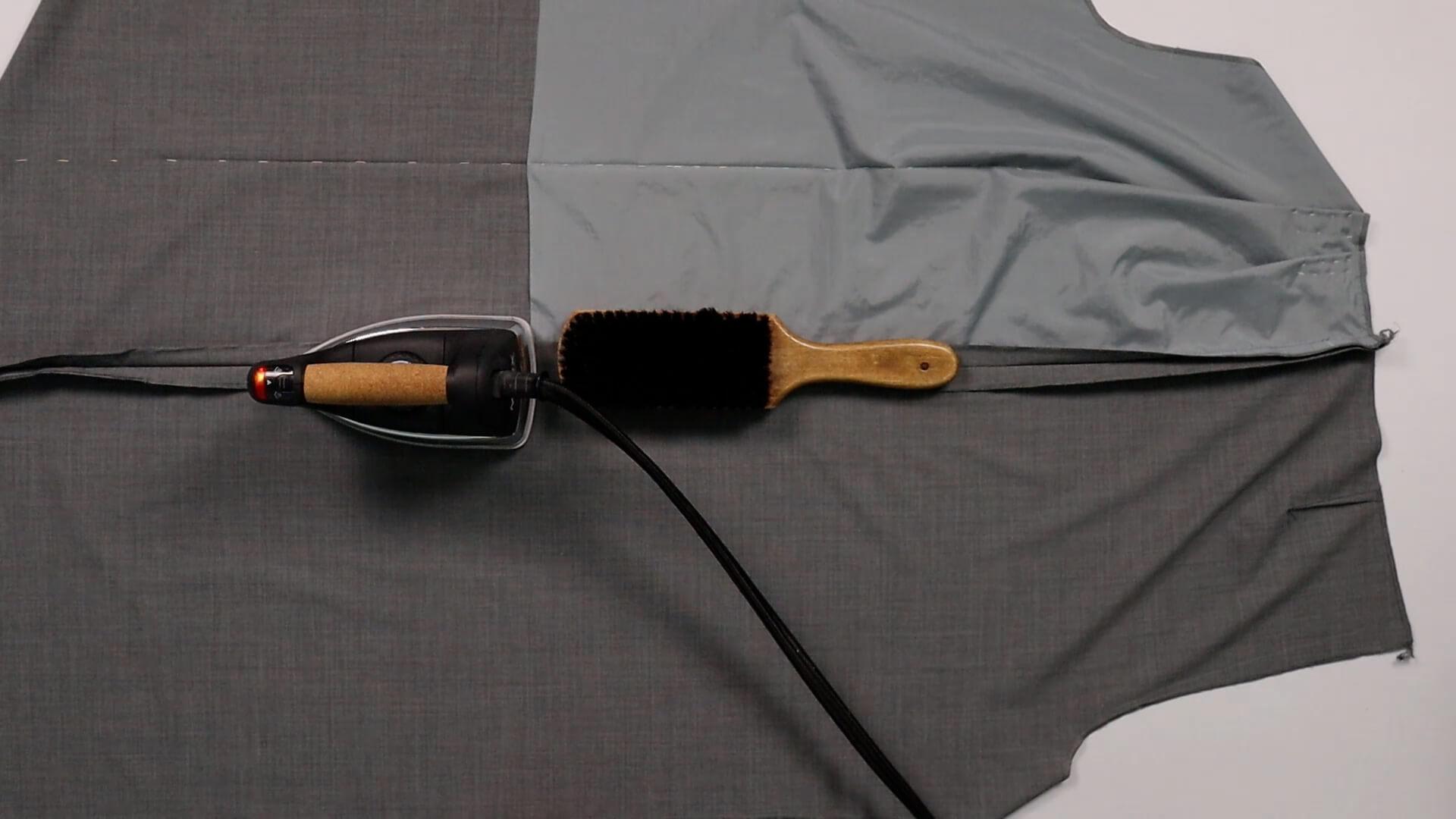
I press the seam allowance open.
I like to use my clothes brush or a tailor’s clapper to make the seam crisp.
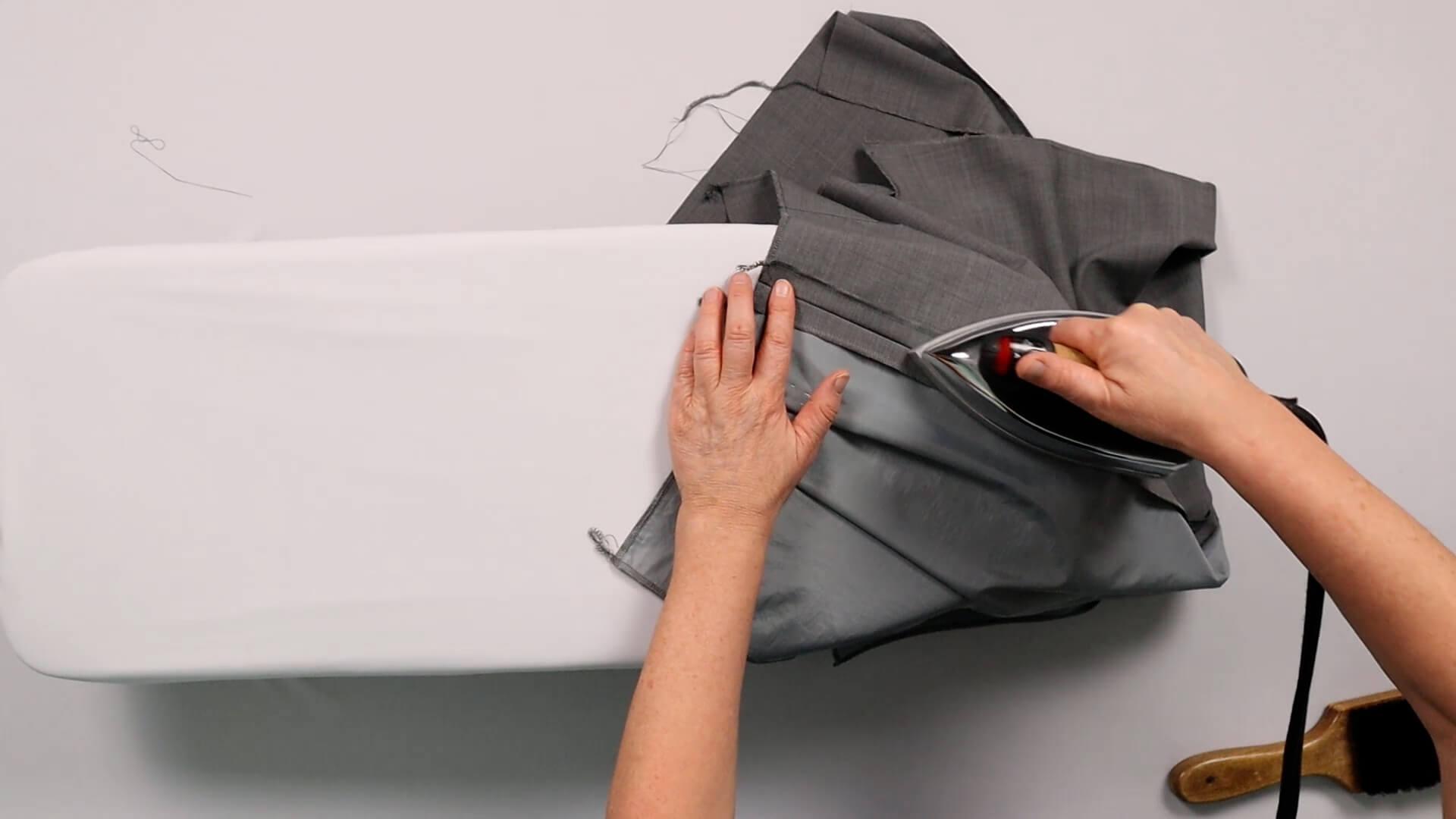
I press the seam allowance at the top of the trousers open on an ironing pad or the round end of the ironing board.
4. Prepare the topstitched hem
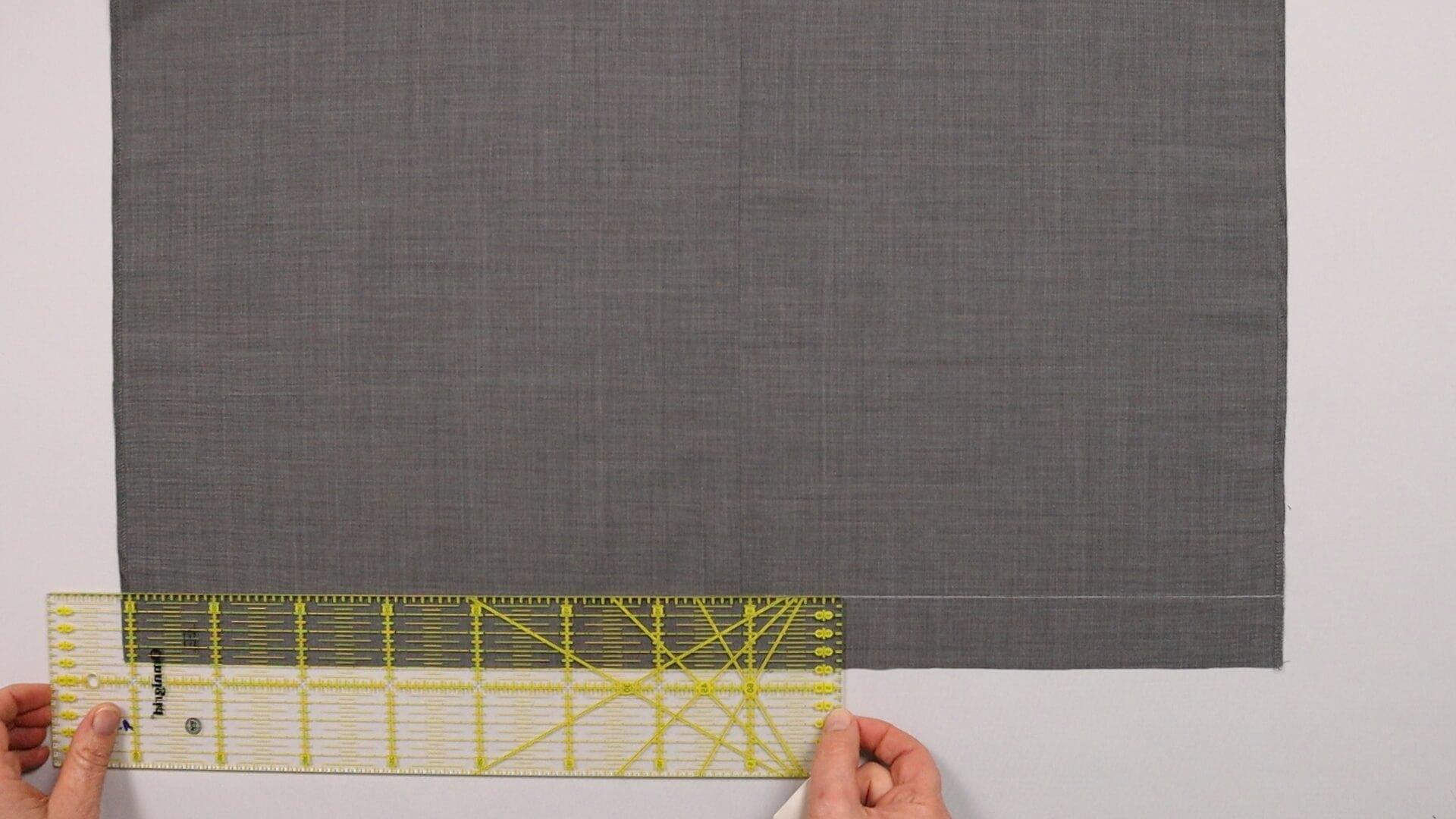
I transfer the hem length resulting from the pattern parallel to the hem edge to the right side of the fabric. (Don’t be surprised that the crease is no longer visible in the front, I took these pictures on a different pair of trousers)
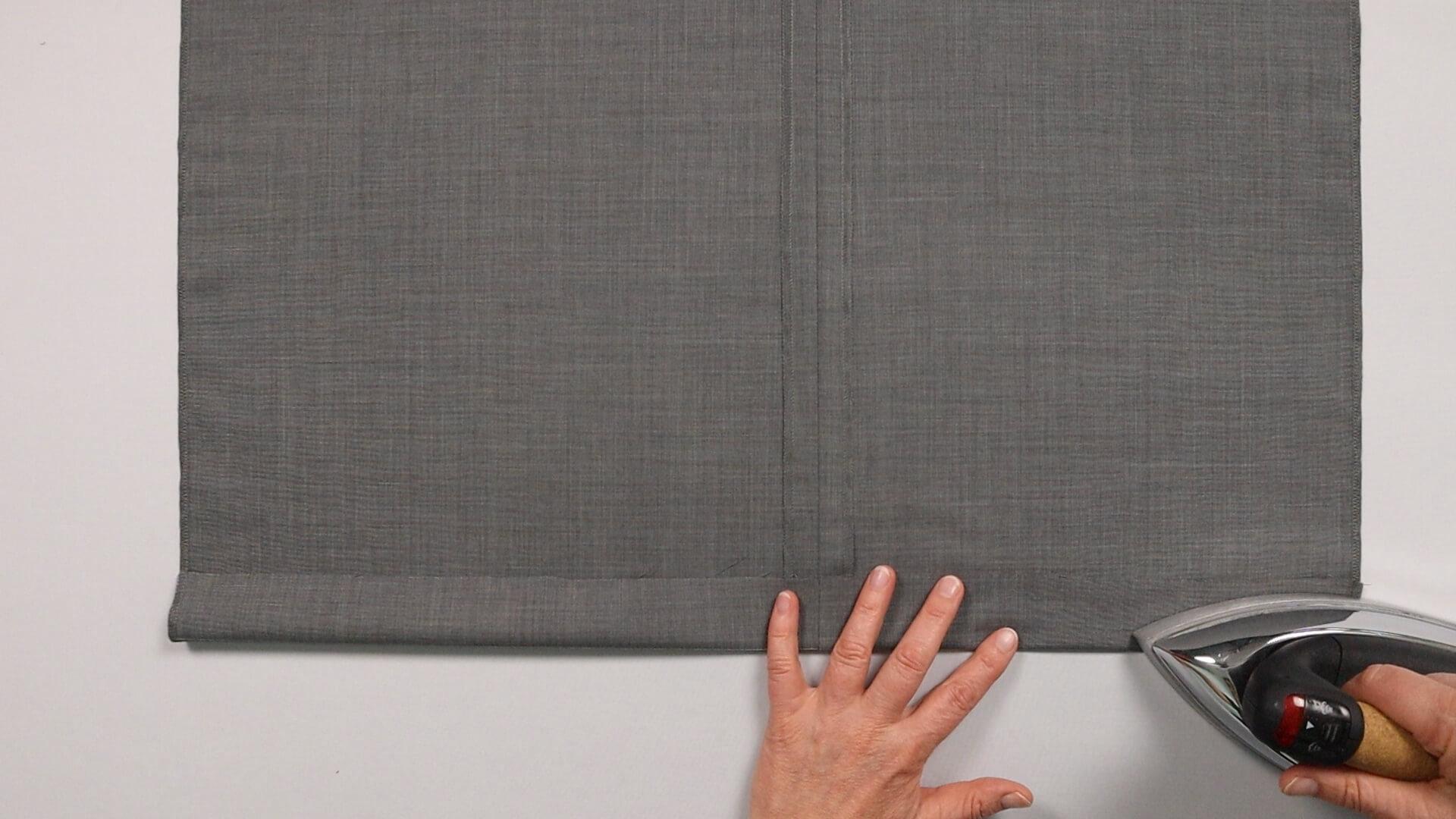
For the single folded version, I turn the trousers wrong side up and press the hem on the marked line.
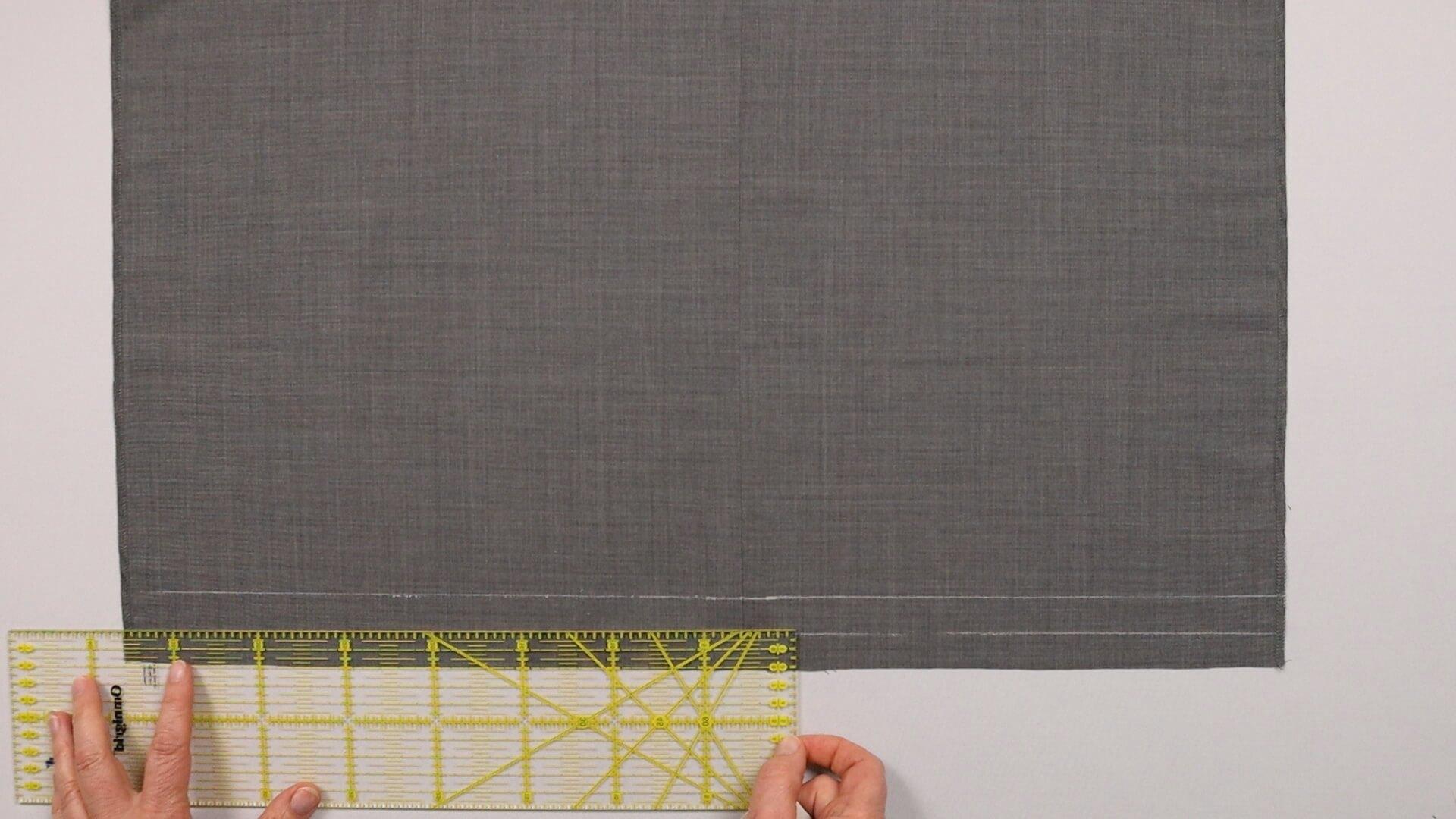
For the double folded version, I mark half of the fold width. You can also mark just 1 cm away from the hem, if you want your hem topstitching to be wider.
I turn the trouser leg wrong side up.
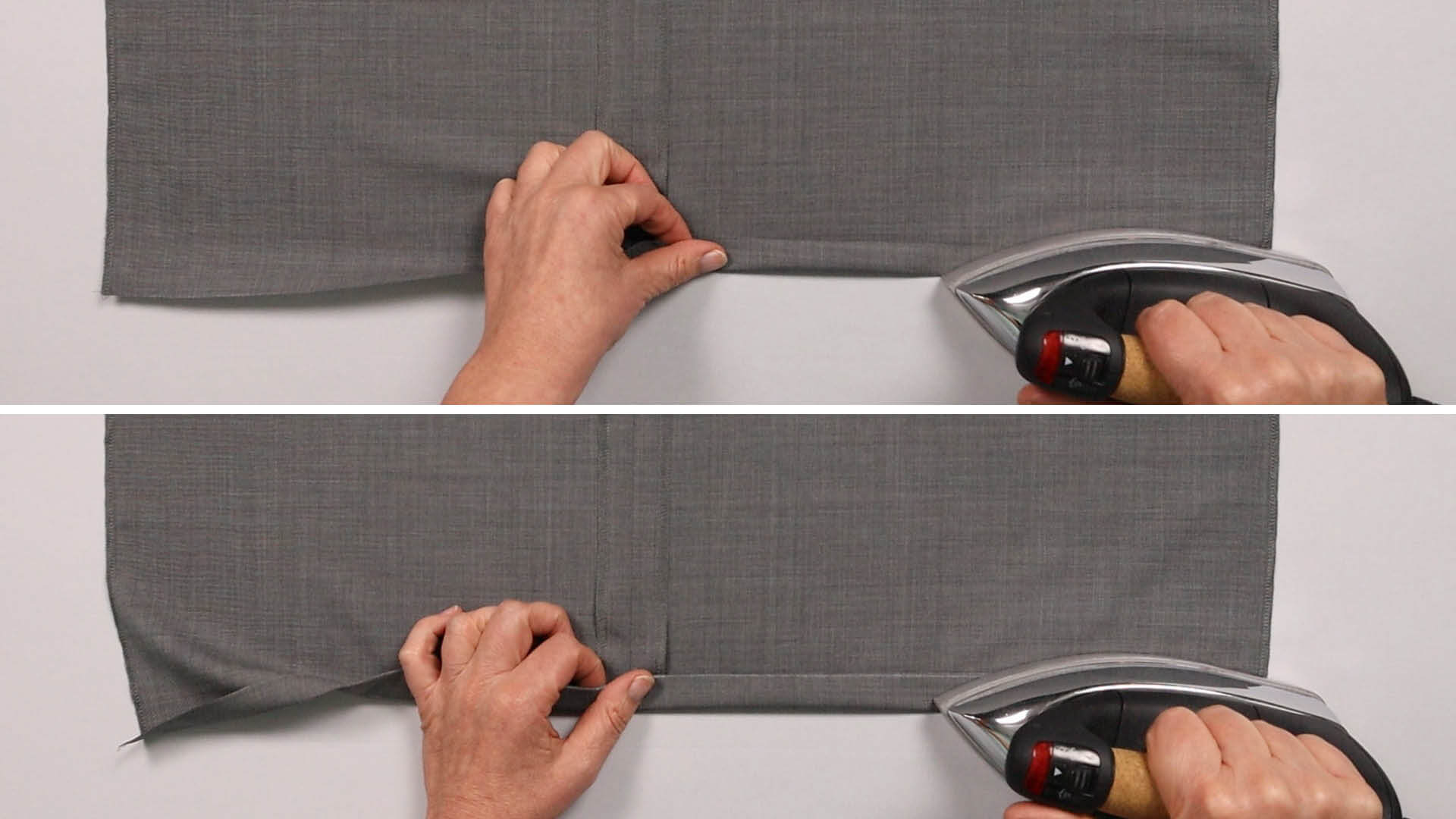
First I press the edge at the bottom marking and then at the finished hem line.
5. Close the inner leg seam
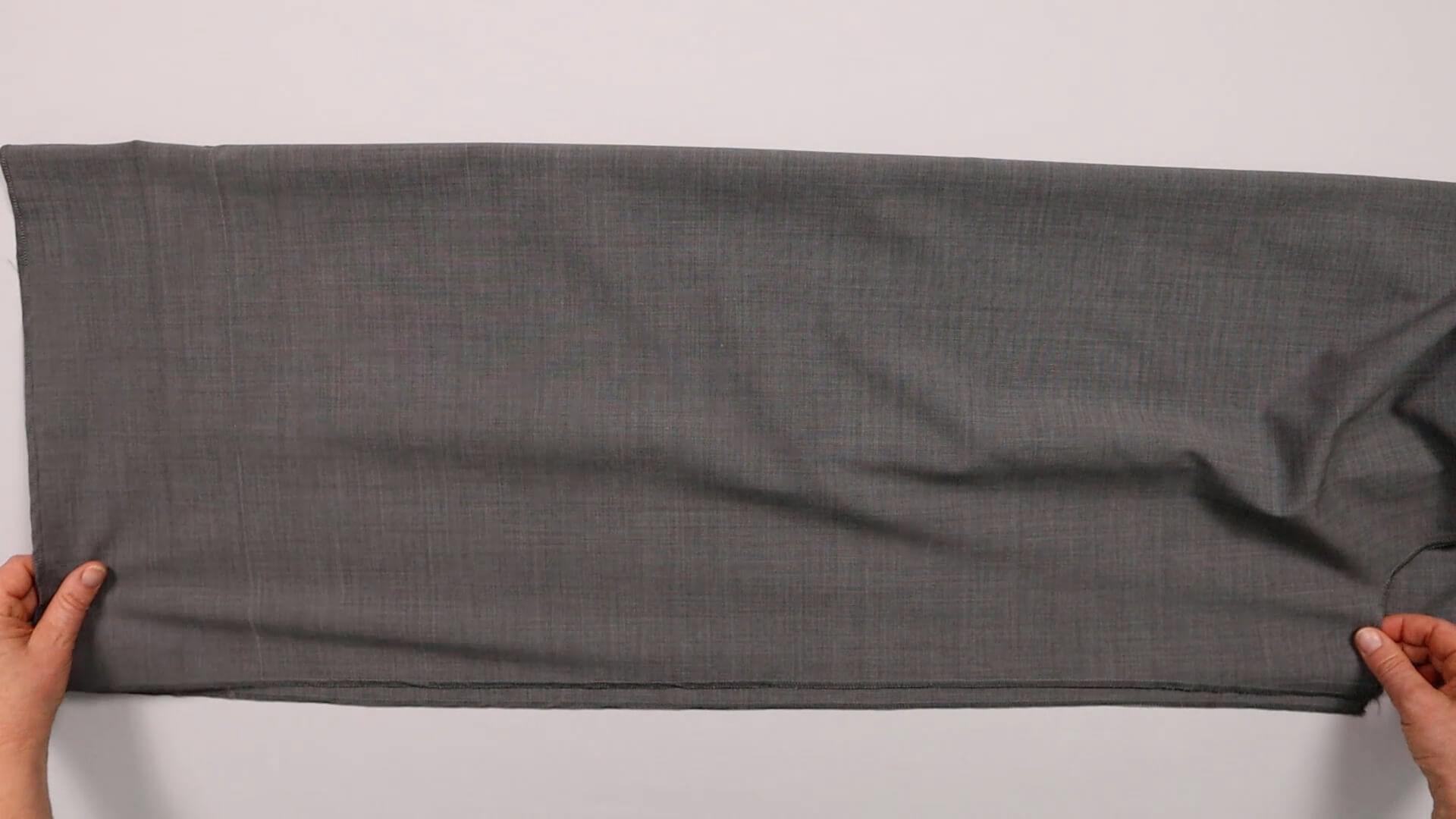
I place the inside edges of the front and back trousers right sides together.
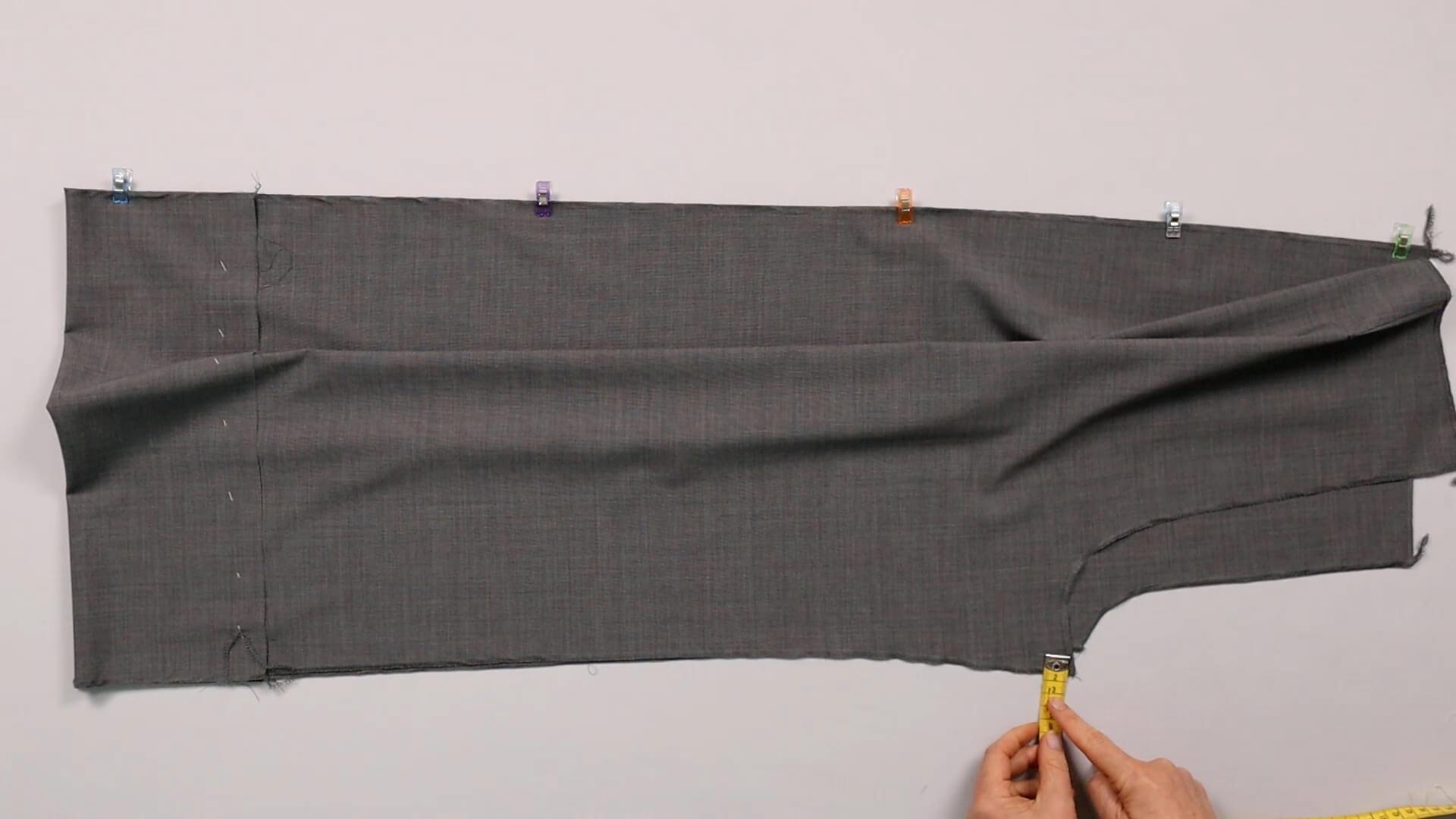
At the upper end of the inside leg seam, I mark the width of the seam allowance on the back trousers.
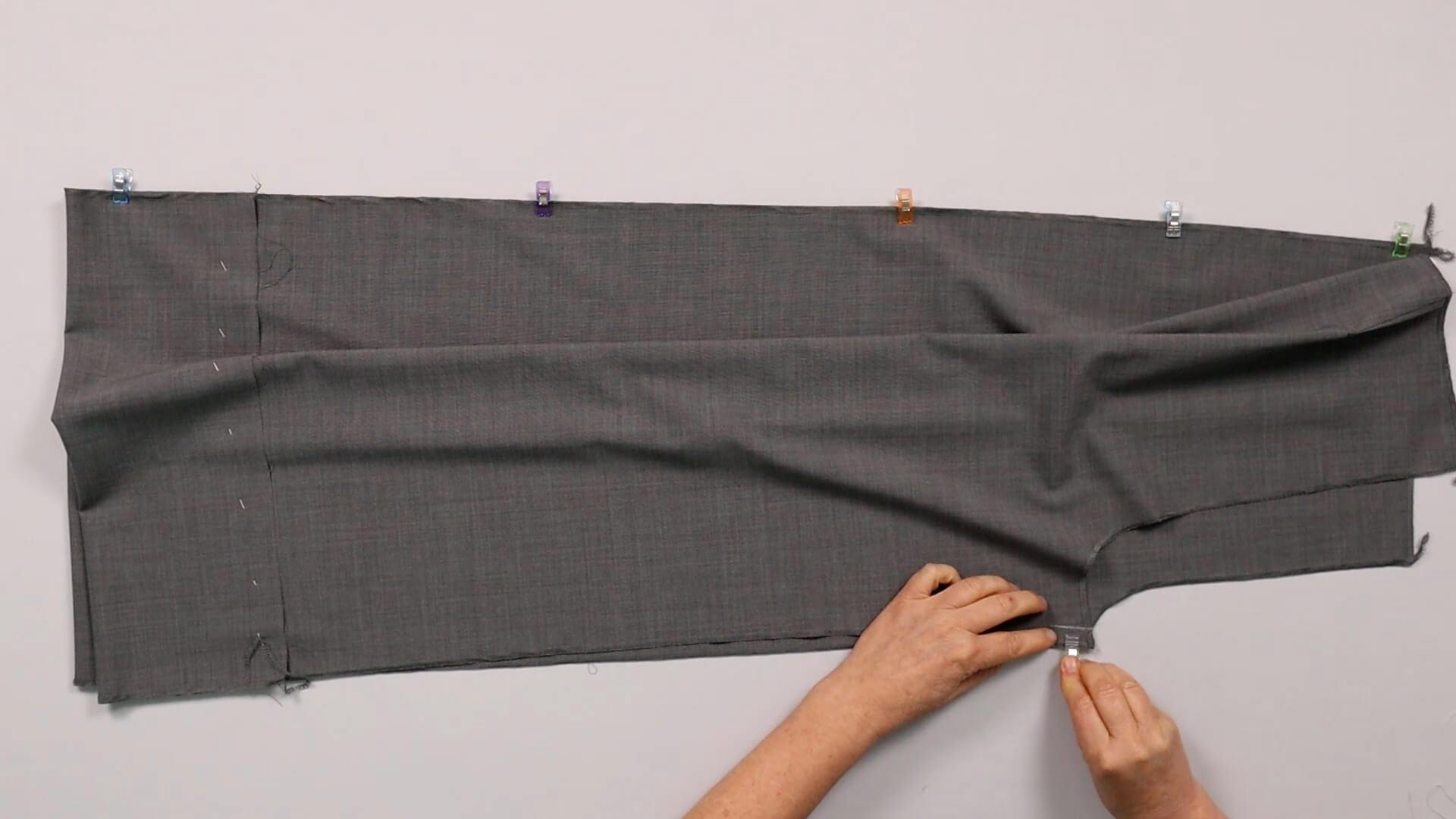
In this position, I secure the upper end of the inner leg seam with a clip or pin. The front and back trousers meet exactly at the marking in the crotch curve.
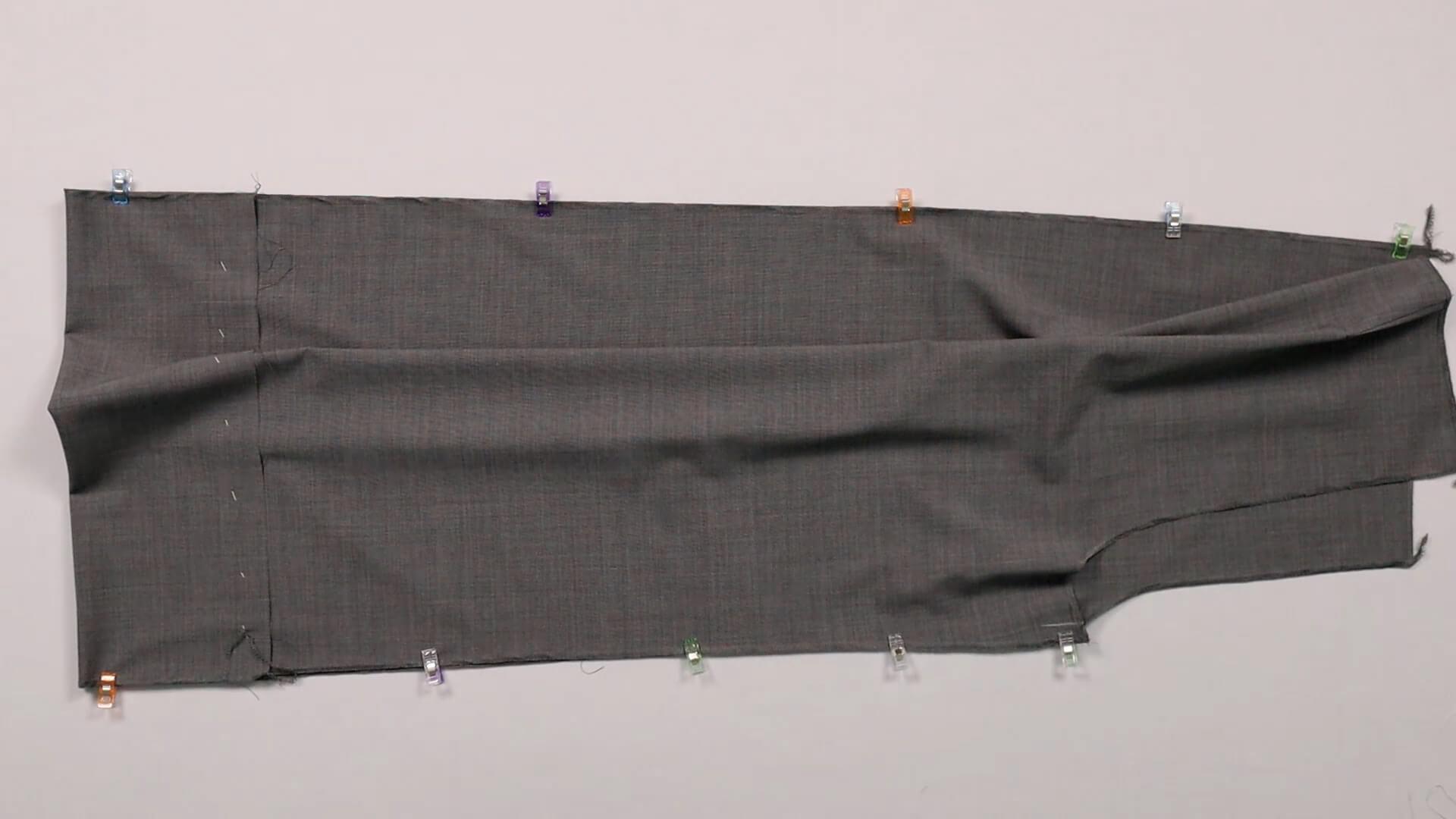
Then I pin the remaining section of the inner leg seam in place and make sure that the knotches match at knee hight. From the knee towards the crotch seam, the back trousers must be stretched to the length of the front trousers. You may have prepared this when ironing the back trousers for fitting.
I sew using the seam allowance indicated on the pattern.
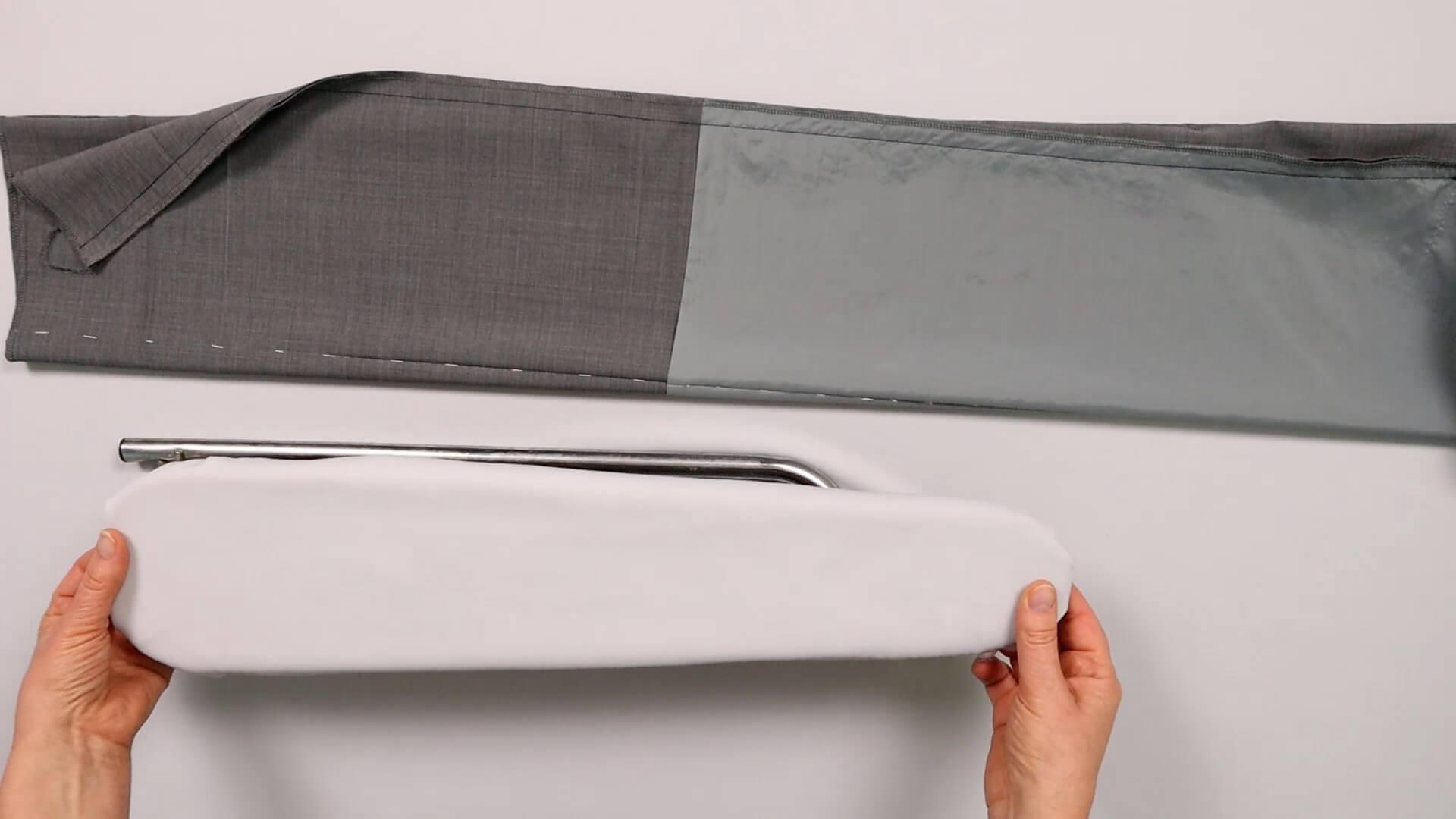
I use a armboard to press the inner leg seam.
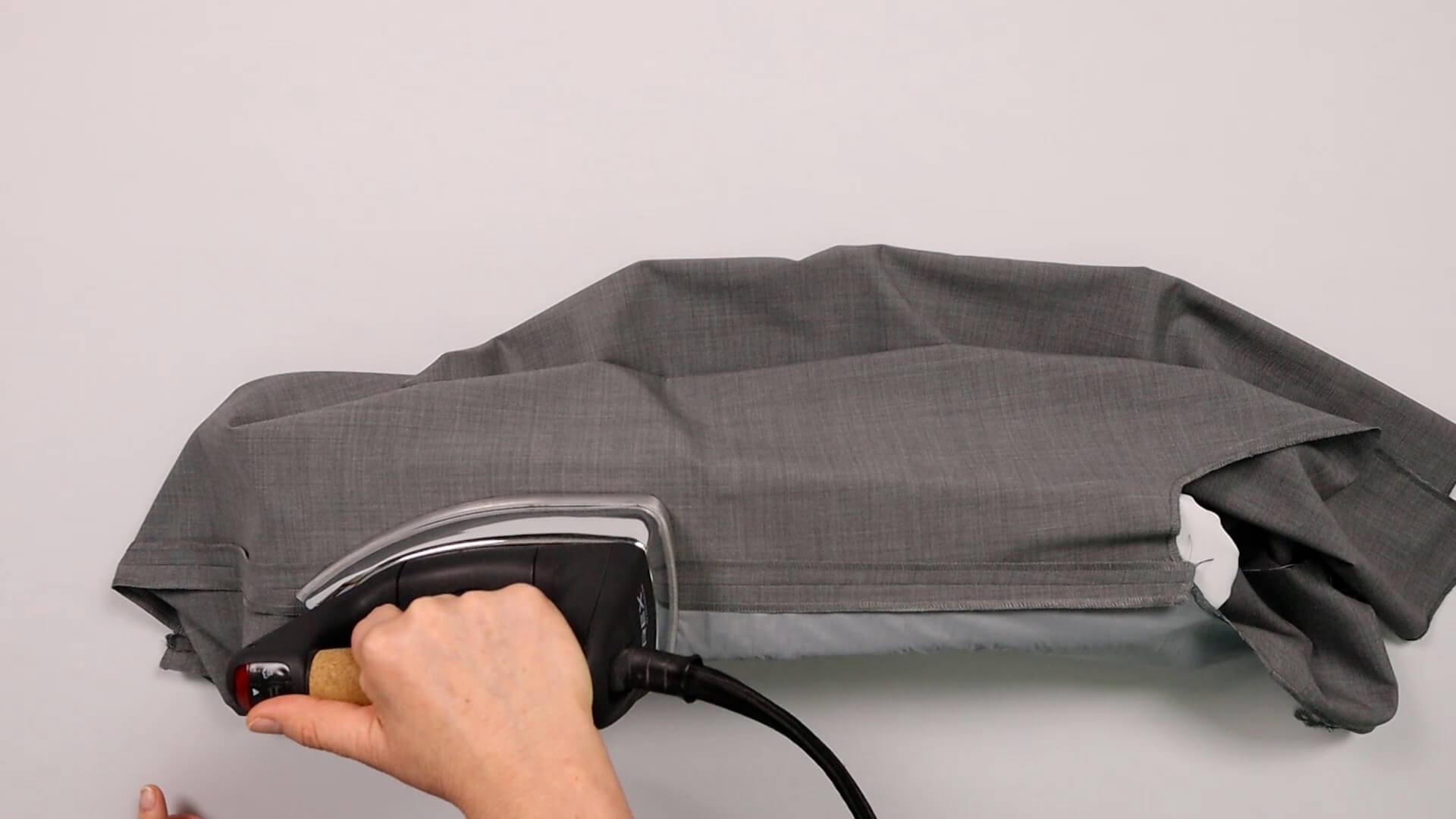
I press the seam allowances open and work with a lot of pressure and take my time so that the seam is completely flat. Of course you can also use a wooden brush or tailor’s clapper again.
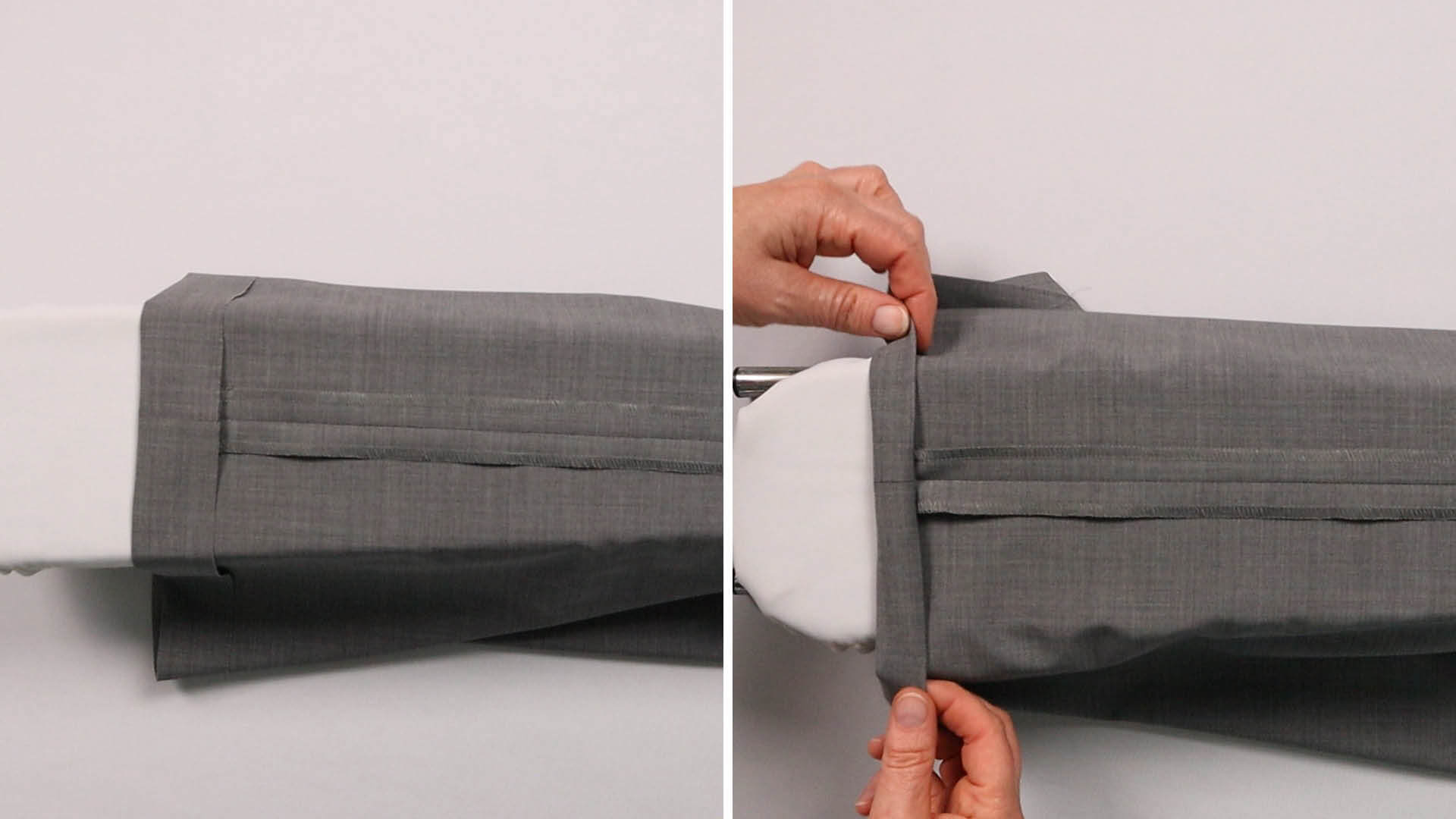
Due to pressing the side seam, the hem edges are possibly not visible anymore. Therefore I press them again.
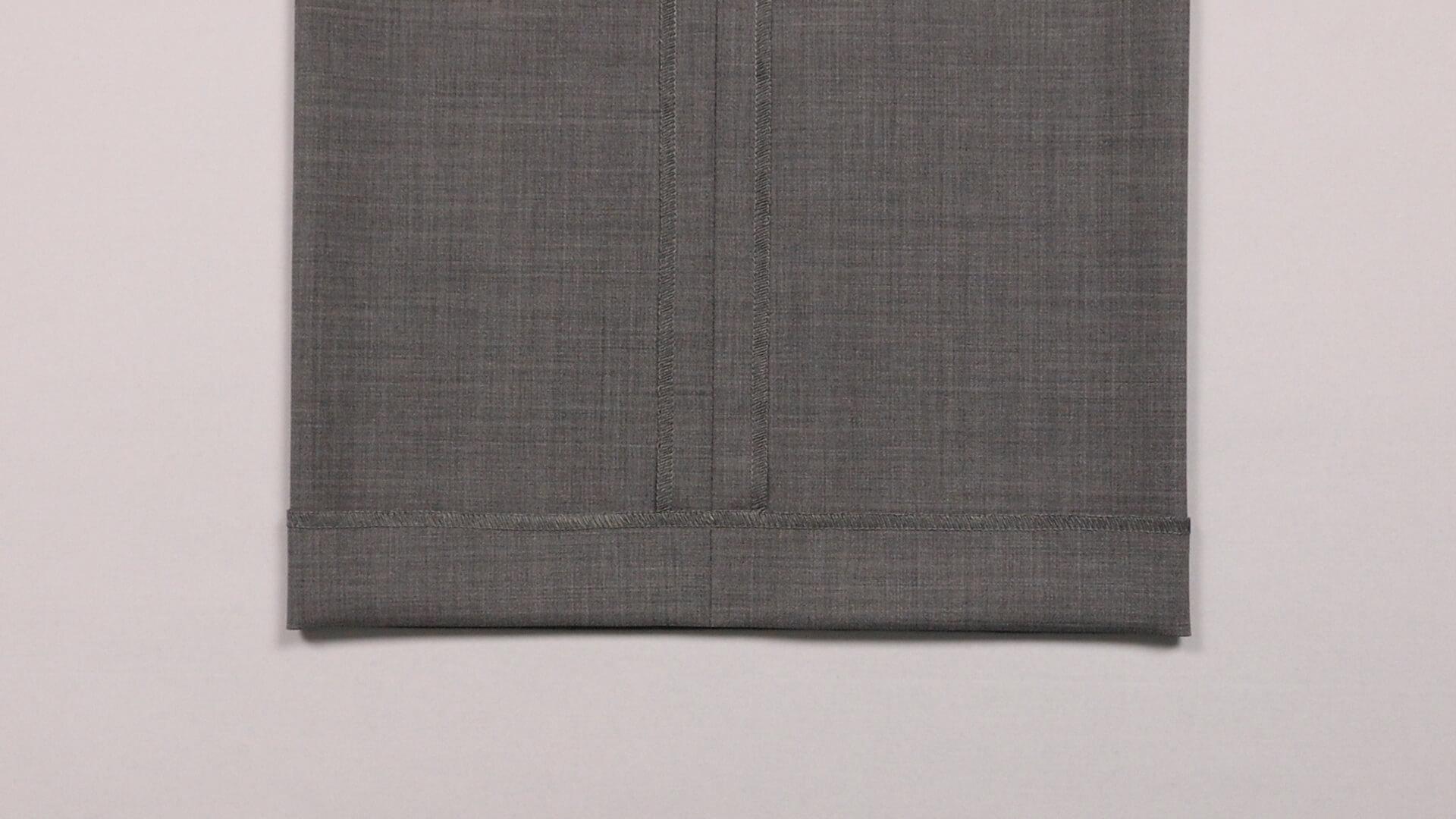
For the single turned-in hem, I finish the edge with the overlock or a zigzag stitch.
6. Sew topsiched hem
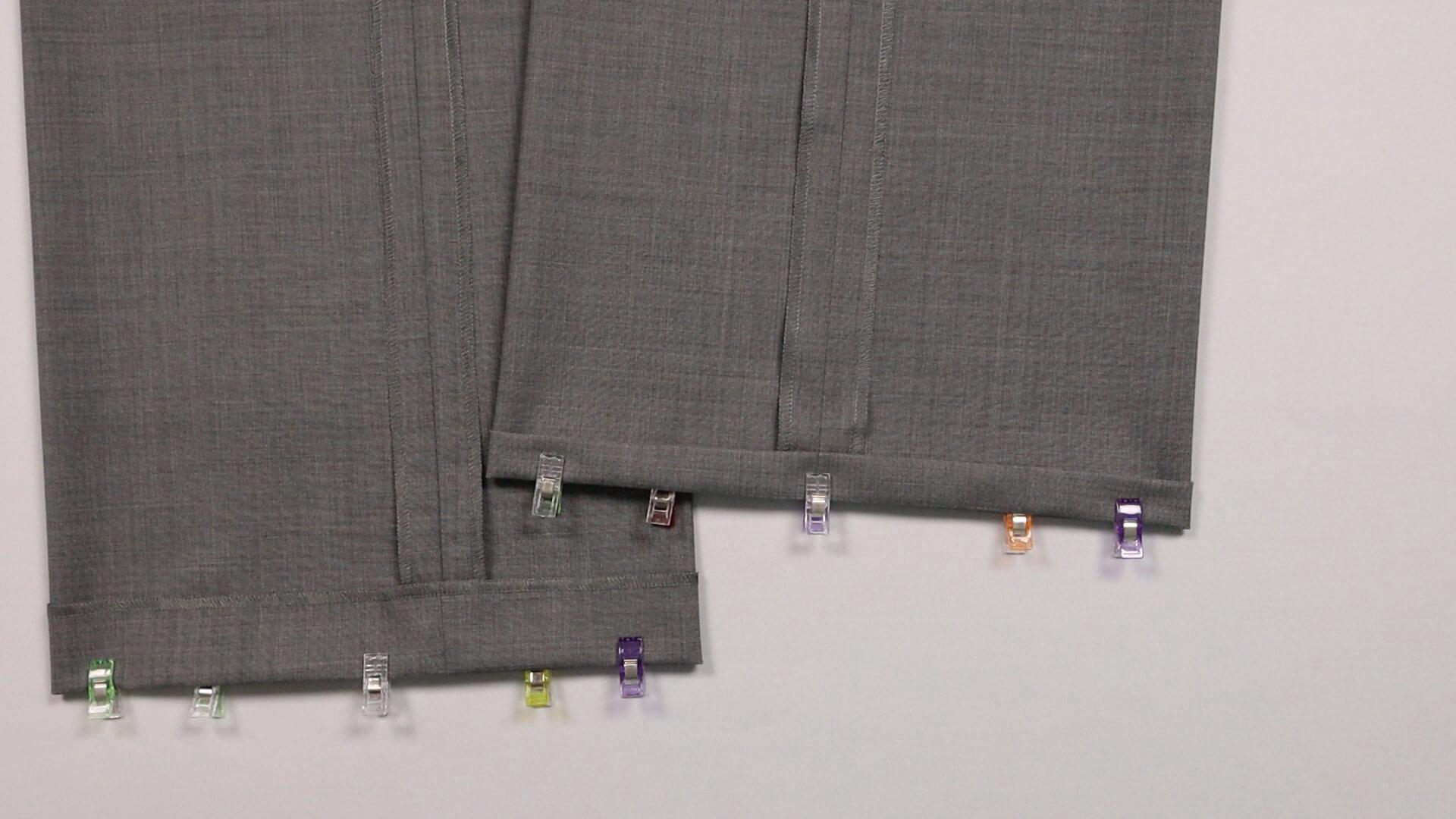
The hem edge can now be pinned.
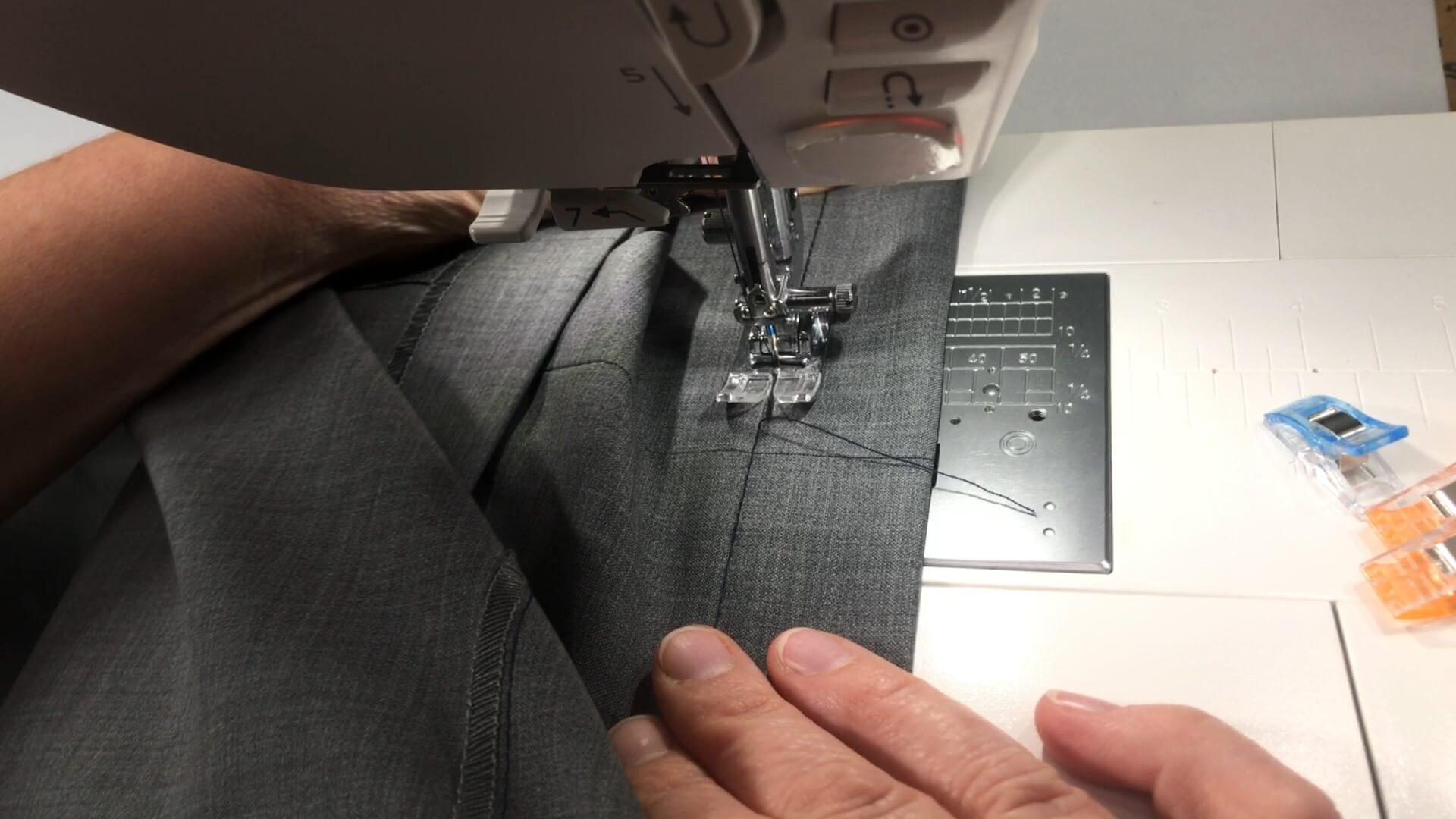
I start and finish topstitching at the inner leg seam.
With the single turned-in hem, my topstitching width is approx. 5 mm narrower than my turned-in width. With a hem turn-in width of 40 mm, this would be 35 mm edge distance when topstitching.
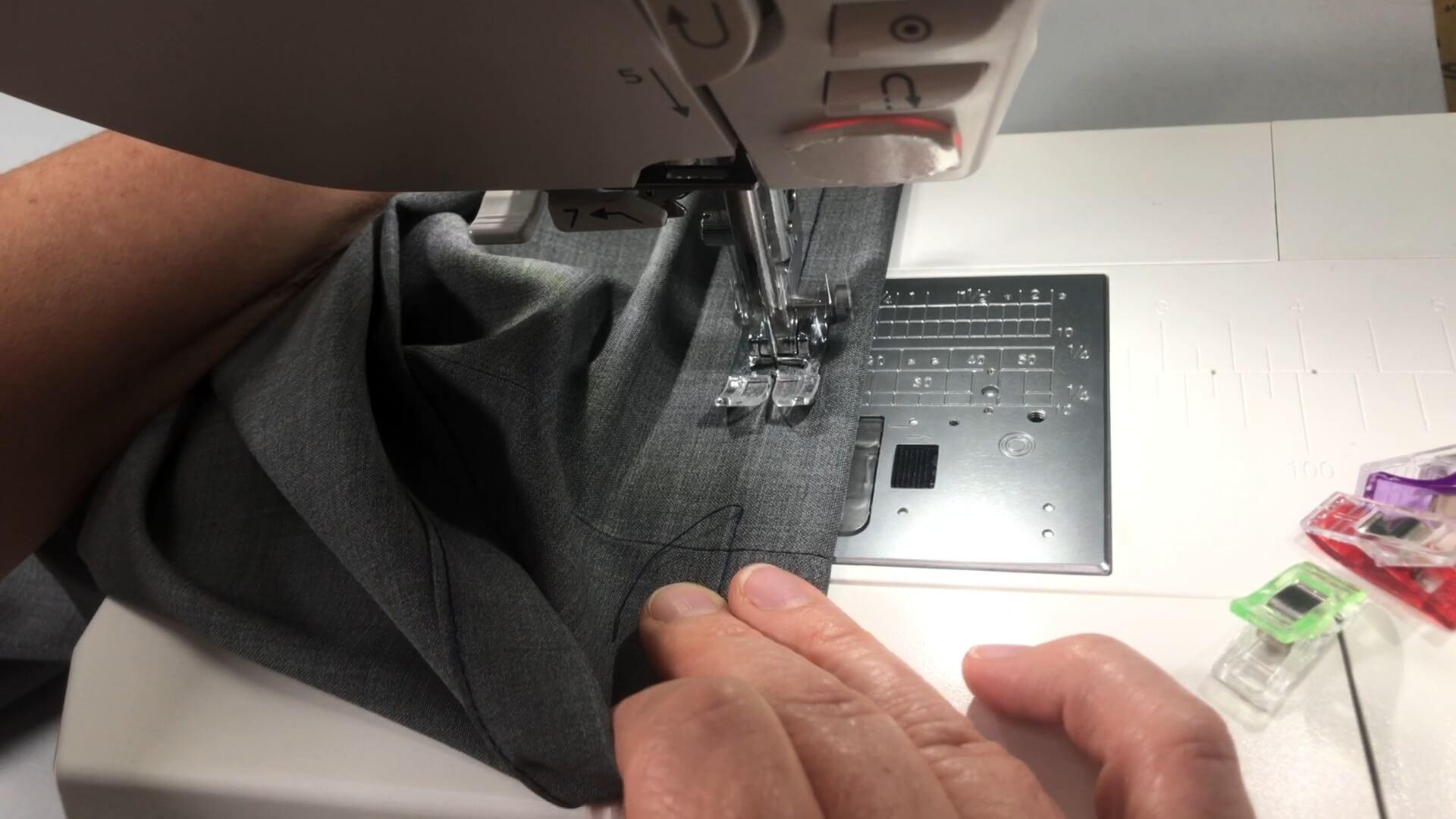
For the double turned-in hem, I choose my stitching width so I topstitch the turn-in by 2 mm distance from the upper folded edge.
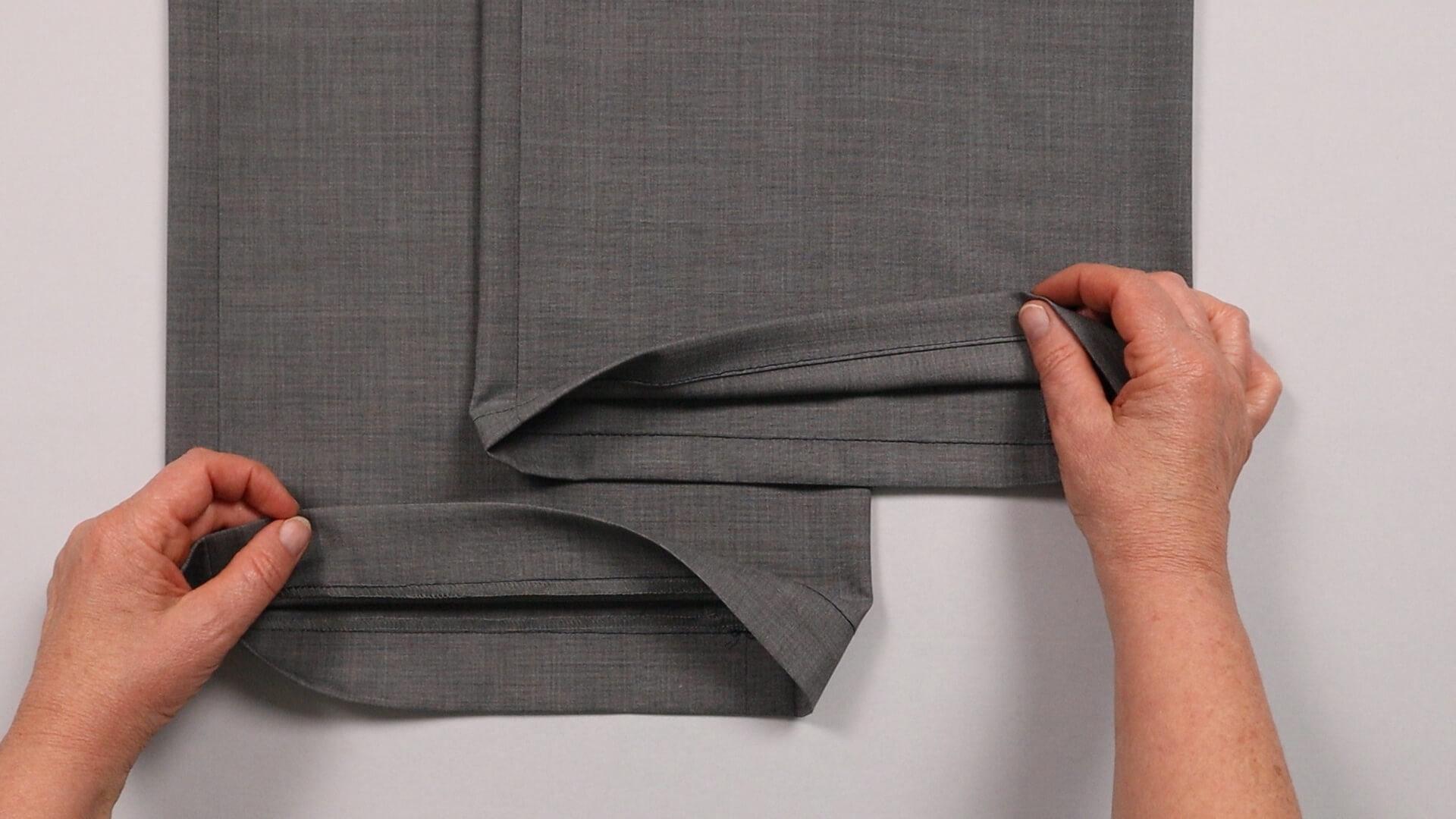
Here you can see the finished hem; at the top the version with double folded turn-in and below the single folded version with overlocked edge.
If you have opted for pressed pleats, these are now also pressed into the hem.
If you also want to add a crease to the back of the trousers, you can find the corresponding instructions here.
Here you will find the link to the next step:
If you’re not quite ready yet and perhaps want to start at the beginning, you’ll find some links here:



